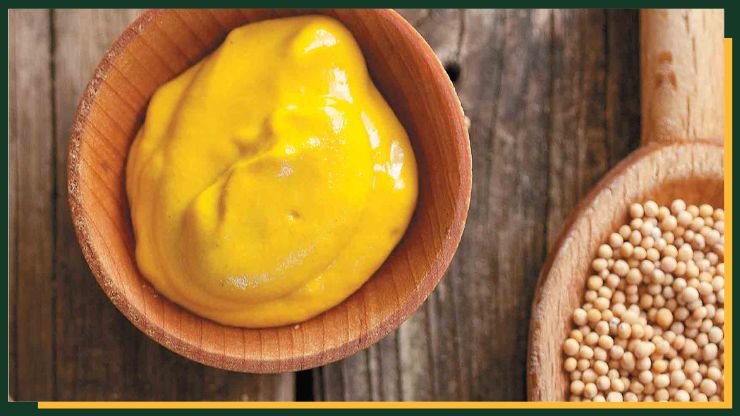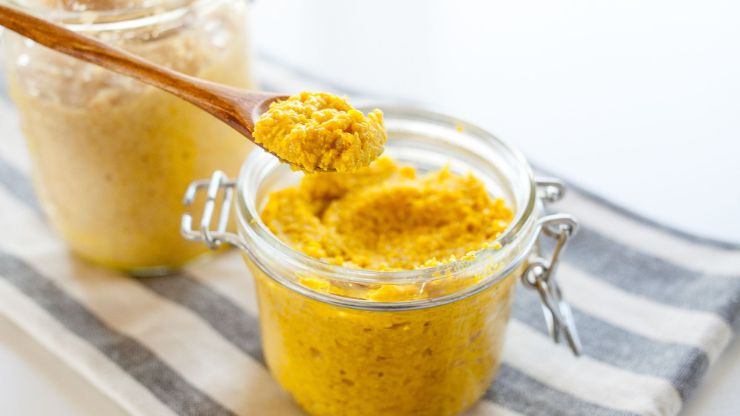How to Make Homemade Mustard – Crafting mustard at home can take this adaptable condiment with a long history to new heights. Making homemade mustard not only allows you to tailor the flavor to your preferences but also provides a rewarding culinary experience.
This process involves transforming simple ingredients like mustard seeds, liquid, and spices into a zesty and customizable condiment. By delving into the art of mustard-making, you can experiment with various textures and flavor profiles, from classic yellow mustard to bold and spicy creations.
This recipe book provides you with the necessary instructions, components, and ideas to enable you to make a mustard that tastes better than store-bought varieties. Savor the ease of use and inventiveness of homemade mustard as you set off on a culinary adventure.
Table of Contents
ToggleAdvantages of making homemade mustard
Crafting homemade mustard offers several advantages that set it apart from commercially produced alternatives:
- Customization: Homemade mustard allows you to tailor the flavor and texture to your liking. You have control over the types and ratios of mustard seeds, as well as the addition of various spices, herbs, and sweeteners.
- Freshness: Making mustard at home ensures the use of fresh ingredients, preserving the natural, vibrant flavors. This freshness can contribute to a more robust and nuanced taste compared to store-bought options.
- No Preservatives: Many commercial mustards contain preservatives and additives for extended shelf life. Creating your own mustard enables you to skip these artificial components, resulting in a more natural condiment.
- Experimentation: Homemade mustard encourages culinary creativity. You can experiment with different types of mustard seeds, liquids, and additional flavorings to create unique variations, such as Dijon-style or whole grain mustard.
- Health Benefits: By controlling the ingredients, you can make mustard that aligns with dietary preferences or restrictions. For example, you can change the amount of sugar or salt to fit a low-sugar or low-sodium diet.
- Satisfaction of DIY: Crafting mustard from scratch provides a sense of accomplishment and a connection to the food you consume. It’s a practical approach that may be rewarding and pleasurable.
- Cost-Effective: In some cases, making your own mustard can be more cost-effective than purchasing high-quality, artisanal options. Buying mustard seeds in bulk and reusing containers can contribute to cost savings over time.
- Environmentally Friendly: Creating homemade mustard reduces reliance on store-bought products that often come in plastic packaging. This can contribute to a more sustainable and environmentally friendly kitchen.
Also, Read – How to Make Lebna
How to Make Homemade Mustard

Making mustard at home is a satisfying and simple process The flavors can be altered to fit your personal preferences. Here’s a basic recipe for making classic yellow mustard:
Ingredients:
- 1/2 cup yellow mustard seeds
- 1/2 cup dry mustard powder
- 3/4 cup white vinegar
- 1/2 cup water
- 1 teaspoon salt
- 1 teaspoon turmeric (optional, for color)
- 1/4 teaspoon garlic powder (optional)
- 1/4 teaspoon onion powder (optional)
- Honey or sugar to taste (optional, for sweetness)
Soak the Mustard Seeds
In a basin, combine 1/2 cup yellow mustard seeds, 3/4 cup white vinegar, and 1/2 cup water to soak. Ensure the seeds are fully submerged and let them soak for at least 24 hours. This soaking process softens the seeds and allows them to develop flavor.
Blend the Mustard
Once the mustard seeds have soaked, move them along with their liquid to a food processor or blender. Add 1/2 cup dry mustard powder, 1 teaspoon salt, optional 1 teaspoon turmeric, 1/4 teaspoon garlic powder, and 1/4 teaspoon onion powder.
Blend until smooth. Adjust the consistency by adding more water or vinegar if needed. Taste and customize the flavor, adding optional honey or sugar for sweetness. Ensure the mixture is well blended before proceeding to the next step.
Don't just scroll, subscribe!
BuzzTrail's unique web-stories are the cure for boredom you've been waiting for.
Also, Read – Probiotic Red Horseradish Sauce
Adjust the Flavor
Adjust the mustard’s flavor to your liking by tasting it. Add honey or sugar gradually and taste as you go if you want a sweeter flavor. For additional complexity, experiment with optional spices like black pepper or paprika. Keep in mind that mustard’s flavor tends to fade over time, so take that into account.
If necessary, balance the flavors by adding more salt or vinegar. Continue adjusting until the mustard achieves the desired taste. Keep in mind that individual preferences vary, so trust your palate and make the necessary tweaks for a personalized homemade mustard experience.
Store the Mustard
Transfer the mustard to a clean, airtight jar or container for storage. To allow the flavors to develop and soften, let the mustard sit in the refrigerator for at least 24 hours before using. This resting period enhances the overall taste. Mustard made at home keeps well in the fridge for several weeks. To preserve freshness, make sure the container is properly sealed.
To keep a uniform texture and to spread any settled particles evenly, give the mustard a short swirl before using each time. Enjoy your homemade mustard as a delightful condiment for sandwiches, hot dogs, pretzels, and various dishes of your choice.
Enjoy
Your homemade mustard is now ready to be enjoyed! Spread it on sandwiches, hot dogs, or use it as a flavorful dip for pretzels. The waiting period in the refrigerator allows the flavors to harmonize, resulting in a delicious condiment. Try different combinations with your work to find the one that suits your palate the most. Give homemade mustard as a unique gift or spread happiness to loved ones. With its customizable flavors and versatility, this mustard adds a personal touch to your culinary creations. Get creative and savor the satisfaction of having made your own delicious mustard from scratch!
Tips:
- Experiment with different types of mustard seeds for varying levels of heat and flavor.
- Adjust the consistency by adding more liquid if you prefer a thinner mustard.
- You can experiment with adding other flavors, such herbs, spices, or even beer.
Conclusion
In conclusion, crafting homemade mustard is a culinary journey that brings forth a spectrum of flavors, textures, and creative possibilities. By embracing the advantages of customization, freshness, and the absence of preservatives, you not only elevate your condiment game but also enjoy the satisfaction of a hands-on culinary endeavor.
Whether experimenting with traditional recipes or forging your own mustard path, the process of creating this kitchen staple fosters a deeper connection to your food. As you savor the unique blends born from your kitchen, relish in the joy of a condiment crafted with care and creativity.
FAQs
Can I adjust the spiciness of homemade mustard?
Can I adjust the spiciness of homemade mustard?
Absolutely! The spiciness can be customized by varying the type and amount of mustard seeds, and by incorporating additional ingredients like horseradish or hot peppers. Adjust to your preferred heat level.
Can I make mustard without vinegar?
Can I make mustard without vinegar?
Certainly! While vinegar adds tanginess, you can substitute it with other liquids like white wine or beer. Experimenting with different liquids allows you to create unique flavor profiles.
How fine should I grind the mustard seeds?
How fine should I grind the mustard seeds?
The grind depends on personal preference. A coarser grind gives a textured, whole grain mustard, while a finer grind results in a smoother consistency. Experiment to find what suits your taste.

